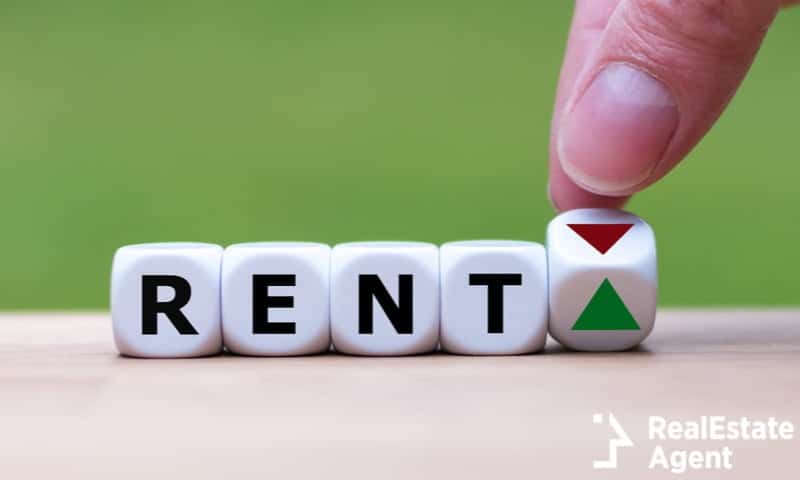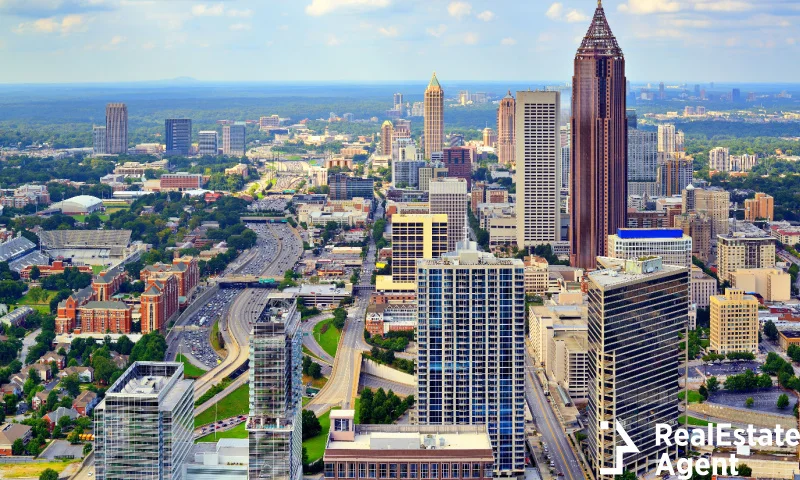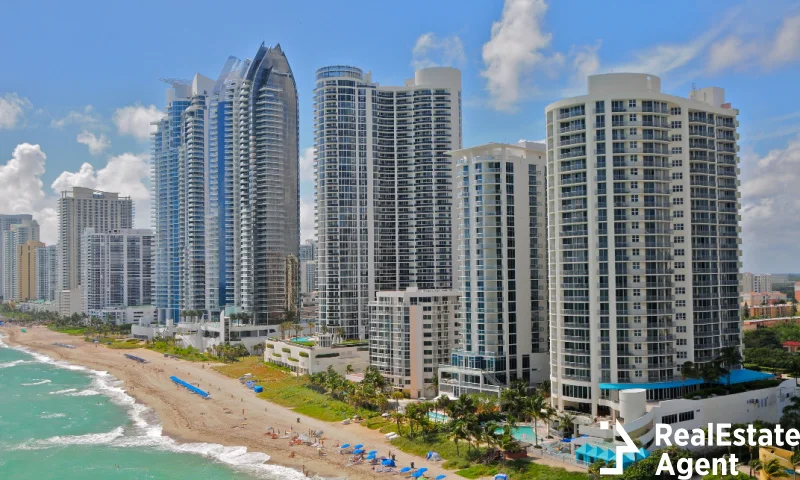That was the question of the 2020 real estate market. Now that we’re nearing the end of 2021 and going on to 2022, people are still wondering. What in the heck is happening to the real estate market? The industry tries to figure itself out while at the same time dealing with a global pandemic that’s been affecting every facet of the market. It’s not easy to figure out which 2021 trend is going where and how it will affect prices. However, we can see that prices are continuing to climb, demand is still high, interest rates are still low, and supply is historically low.
We mention those factors because they can differentiate between a real estate bubble and a real estate boom. Home prices were already climbing before the pandemic hit as the inventory was low even then and when the vaccine rolled out, the impact was felt. Demand continued to grow, even more so due to the pandemic’s supply constraint. However, due to the rapid increase in prices, many are still wondering whether this is a real estate bubble. Now, without going into details of what led to the 2008 bubble, let’s look at the facts of today.
Why isn’t it a Real Estate Bubble?
We will start this part of the article by explaining one thing. Real estate speculations or market forecasts aren’t things to be trifled with. Considering what happened during the 2008 market crash, we all became highly aware of the risk involved in speculating, trading, and real estate gambling. Since then, many things have changed, and several mechanisms have been set to limit the risk involved in real estate endeavors for everyday people.
For many Americans, their homes are the most expensive possessions they own and collateral for much outstanding debt for other purchases. People’s lives depend on the value of their property, and if those values are to crash, as they have after the 2008 bubble, people can lose livelihoods. This is why looking and analyzing the facts is essential, especially when conversations like these occur. So let’s look at the facts.
Low Supply and High Demand
The low inventory of houses isn’t a result of the pandemic. Realtor® discovered that the US’s housing supply is short by 5.24 million homes. This isn’t news as the construction of the residential houses didn’t manage to keep up with demand since 2011. And now, we’re in 2021, after ten years of underbuilding the demand is higher than it’s ever been.
To understand how this doesn’t fit the bubble scenario, let’s look to 2008. Back then, there were too many houses and limited demand. This is not what we are dealing with now. The pandemic made us work from home, and many people realized they needed a bigger space. Also, others felt safer living in single-family detached homes than in condominiums where you share a lobby with 100-200-300 other people. So people started looking into selling and buying properties.
Another factor that influences the growing demand for houses is income. While the job market was also affected by the pandemic, unemployment slowly reached pre-pandemic numbers, and revenues grew. Here we can add the stimulus checks, and we can get a broader picture of the financial situation of potential homebuyers in 2021.
The last factor we’ll mention here is the millennials, the largest generation group. They have reached prime home-buying age, and many of them are interested in buying their first home. At the same time, record-low interest rates are a catalyst for them. While many thought they might have to wait a few more years before they could afford their first home, the interest rates threw them a curveball, and they realized that waiting might not be necessary.
Constrained Supply Chains
The simplest way to understand why prices are climbing in every direction is to look at the supply chains. When we talk about supply chains, we mean the big ships that circle around the planet to bring X, Y, and Z from point A to point B. Over the last few months, we’ve seen that this is becoming problematic. It doesn’t matter if the material being supplied is bamboo, sheep, steel, or plastic. As demand increased around the globe because many economies were halted, the few suppliers still in business started to struggle. Their inventory decreased, the demand increased, and prices grew.
To understand this, let’s say we have a chocolate factory. There are many chocolate factories worldwide, but more than half of those closed down due to the pandemic. People want more chocolate because it makes them happy, and the pandemic makes them sad, so they order more chocolate. The 20% of the factories left open need to supply around 150% of the global chocolate market provided in the past. They simply can’t keep up with demands. That’s what happened to the computer chips, that’s what happened to materials used in construction, that’s what happened with pretty much everything.
Simply put, supply chain disruptions due to limited factories, increased screening due to COVID, closed borders, and limited workers constrained the supply for building materials. Building a home now is more expensive than it had been in 2019 because of that. Unfortunately, it seems that supply chain constraints will remain a problem for the following couple of years or until most of the world’s population has gotten the COVID vaccine. Saying that vaccinations save the economy isn’t a joke and should not be a political stance.
To add salt to the wound, construction workers are generally hard to find. Even if builders have the materials necessary to build homes, they are short on workers. By August 2020, the US lost around 3,000 construction jobs, and we have recovered only 79.2% since then. Going back to the example above … with 79.2% of the workforce active, the production can not supply the 150% demand on the market.
Logical Market Decisions
Considering the way things went about in 2008, sound economic decisions are necessary. The first thing that stops the current market from becoming a bubble is mortgage loans. Getting a mortgage loan in 2021 is much more complicated than it was in 2008 and before. Back in June 2006, the index of mortgage credit availability almost reached 870. In March of 2021, however, it was just 125. Lenders aren’t lending money as easily right now, and some standards exceed the requirements of the Dodd-Frank Act of 2010 passed to prevent another financial crisis.
Borrowers need better credit scores to get a loan and today’s loans are smaller in proportion to the home’s value or their incomes. It is no longer an option to play bluff with the lender and get a no-documentation or low-documentation loan. All the information necessary to attest to your creditworthiness is required, and getting a loan with bad credit is impossible. Because of that, what happened in 2008 is very unlikely to happen now.
Another economic decision came from the Federal Reserve. While we are all enjoying these low-interest rates, the Federal Reserve determined that they will maintain them low for now to favor economic growth. When the economy is somewhat stabilized, interest rates will climb gradually to prevent overinflation. Changes in the job market can affect the real estate market. However, this alone is a sign that a bubble is unlikely to happen. In a real estate bubble, values are increased artificially. Right now, housing costs are climbing due to low supply and high demand.
Cooling off signs in the Real Estate Market
Over the past 18 months, approximately, we’ve been checking median home values across the US and had to correct or modify housing values mentioned in other articles. There have been periods where from Monday to Friday, prices would experience a sudden growth, and the information was no longer accurate. That’s been going on for over a year. We have been able to see lately that, while prices are still growing, the rate at which they are growing is slowing down.
Don’t get me wrong. Prices are still high, but as demand is slowly decreasing, bidding wars have a lower impact on prices. Rather than each listing receiving 10 to 15 offers, they get 1-5 offers. From a historical perspective, this amount of offers is still high, and bidding wars are a normal result. If one property is listed for $350,000, through bidding wars that price can climb to $380,000 or $420,000, depending on motivation and market competitiveness. Because of that, while six months ago, the difference between the listing price and the selling price would be between $30,000 to $100,000, now it’s likely to diminish. Changes will happen in the future, but the driving factors are the following:
Rising Housing Prices
We mentioned that while the rate at which homes are appreciating is already slowing down, prices won’t go down. Yes, this (17%) has been the highest year-to-year growth since 1975, when we first recorded statistics. However, while housing prices are the highest in 131 years, this growth rate is expected to drop to 5.3% in 2022.
Growing Interest Rates
Until 2022 when the economy has had a chance to recover, we might not see growth in interest rates. Once the interest rates do rise, we can expect even more cooling-off to cover the real estate market.
Financial Gains
The unemployment rate is slowly decreasing across the country as more Americans are getting their jobs back or simply starting work again. Many of them have demanded income increases to get back to work due to the COVID exposure risks. Because of that, their real estate buying power will grow in turn with their incomes.
Conclusion
Looking over all the factors that impact the US real estate market, we shouldn’t worry about the slight cooling off we are currently experiencing. We established that a real estate bubble happens when demand is low, and inventory is high. This is the exact opposite of what we’re experiencing. Demand is still high and inventory is still low. However, the current factors aren’t likely to last for long, and changes will occur in the future. What potential buyers and new homeowners must understand is that the real estate market is constantly changing. We can look at the market and assess what is likely to happen based on information we have at any given time. Still, unpredictable things can happen. Look at what’s happening now. Even if some people knew to expect something like this happening, could they have known how the global economy would be affected?
These changes require a certain level of security for each individual. Conserving cash reserves will help avoid cash constraints, and it is an option for those that want to stay on the safe side. However, the best way to face these market changes is to let the market teach you the right price for your listing. Setting the correct prices becomes an aggressive game when demand drops, so find a real estate agent in your area to help.
It’s difficult to determine when this shift will come, but the residential real estate market in the US stays strong. Let us know what you think about the current state of the market in the comments below. Also, don’t forget to Like & Share this article with friends and family!














